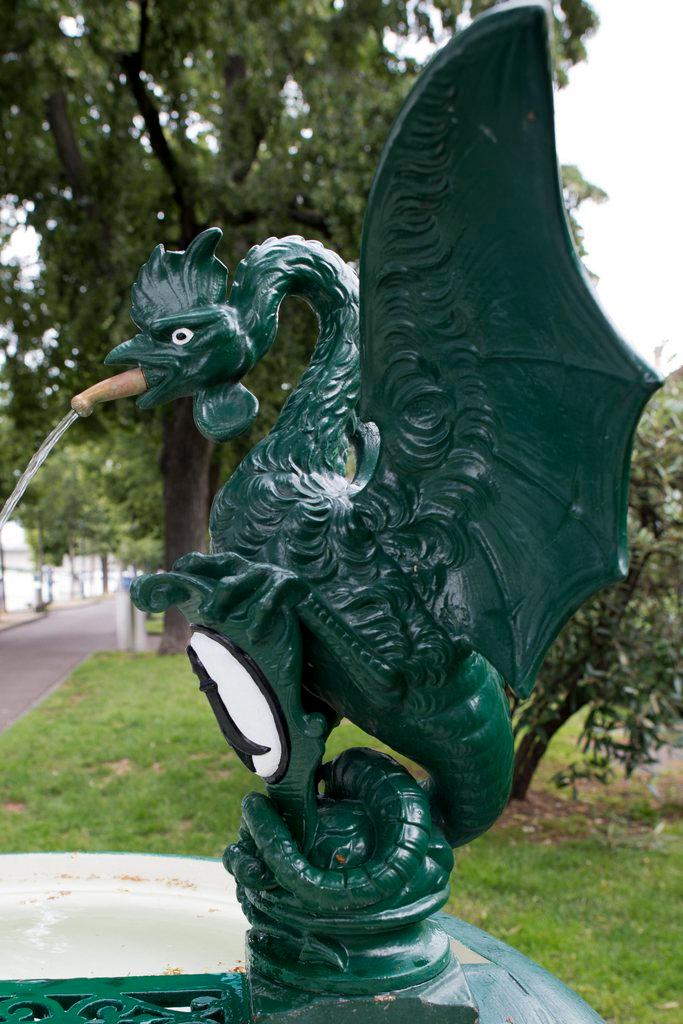Swiss fountains: bubbling right under our noses
After a decade living in Switzerland, Steve Crump has got to know the country almost as well as his native US. One thing he appreciates is the quality and quantity of historic water fountains scattered throughout the country’s cities.
You don’t have to spend much time in Basel, my home, or for that matter any community in Switzerland, before you notice them. In every town and every city, from Zürich to the smallest Dorf, you’ll find them. Brunnen. Water fountains.
I mentioned them recently to a Swiss friend in the context of features that I like about Switzerland and her blank look betrayed how she took them for granted. I suppose this is easy to do when living in a country so overflowing in beauty and abundance.
Not wanting her to remain unappreciative, however, I felt moved to explain why I like them so much. I started with the basics, the water itself. Simply stated, it’s perfect. Not possible to improve. Cool, fresh and free.
Next is their ubiquity. Hiking, running or biking, their water has slaked my thirst in every corner of this beautiful country. As a dog guy, one feature I especially like is that many fountains incorporate a nice little bowl, perpetually refilling, for dogs.

I continued, noting their entrancingly varied and charming appearance as well as the Swiss culture they collectively represent. Far from mere public bubblers, they’re art, crafted from stone, bronze and cast iron, many with gilded figurines.
They also offer a walk through history. Bern, which calls itself the “City of Fountains”, boasts over 100, including 11 classics from the 16th century. Its most notorious may be the Kindlifresserbrunnen (child eater fountain), starring an ogre with a bag of squirming babies, devouring them as if they’re candy.
Hans Gieng, the 16th-century Fribourg artist responsible for most of the city’s fountains, may have had a good explanation for this one but, alas, it was lost to posterity.

In Basel, Pascal Hess and Martin Stauffiger developed a terrific websiteExternal link for their 2002 Maturarbeit project that catalogues Basel’s 231 fountains, a tool begging to be used in the creation of a treasure hunt. Standing out among many, Basel’s most famous has to be the ornate Fischmarktbrunnen, Switzerland’s oldest, believed to be in operation since 1390.
Not to be outdone, as usual, Zürich offers guidesExternal link for ten tours covering the 1,224 fountains scattered throughout the city. Number one on their list is the Amazonenbrunnen which was the first supplied by spring water and which dates back to 1430.
In spite of my friend’s reaction, it’s clear, in both villages and cities, that there’s a great deal of pride and affection felt by the country’s citizens for their fountains. It’s a well-deserved pride, too, as this network of structures brings together elements of culture, art, history, environment and economics while offering the opportunity to stroll through the centuries in the community of your choice, enjoying a refreshing drink when thirsty.
And rest assured, while they may be old, the fountains are subject to typical Swiss quality standards, meeting the same contemporary ISO 9001:2000 certified test requirements as the water flowing from the household tap.
Wow, she said when I finished. You’re right. Sometimes it takes a foreigner to point out the little things that we simultaneously overlook and enjoy every day.
The views expressed in this article are solely those of the author, and do not necessarily reflect the views of swissinfo.ch.
swissinfo.ch publishes op-ed articles by contributors writing on a wide range of topics – Swiss issues or those that impact Switzerland. The selection of articles presents a diversity of opinions designed to enrich the debate on the issues discussed.

In compliance with the JTI standards
More: SWI swissinfo.ch certified by the Journalism Trust Initiative










You can find an overview of ongoing debates with our journalists here . Please join us!
If you want to start a conversation about a topic raised in this article or want to report factual errors, email us at english@swissinfo.ch.